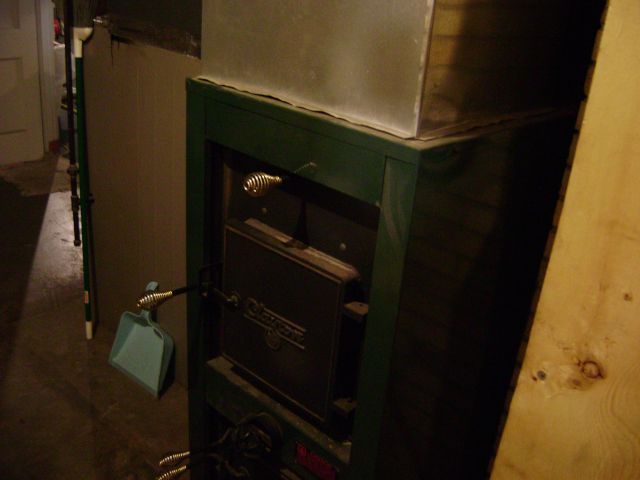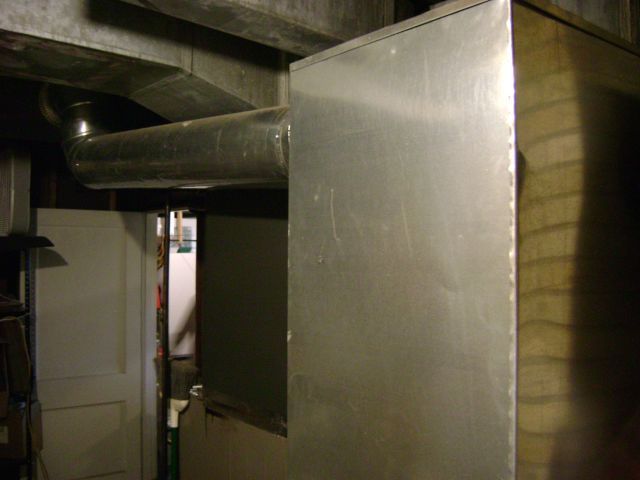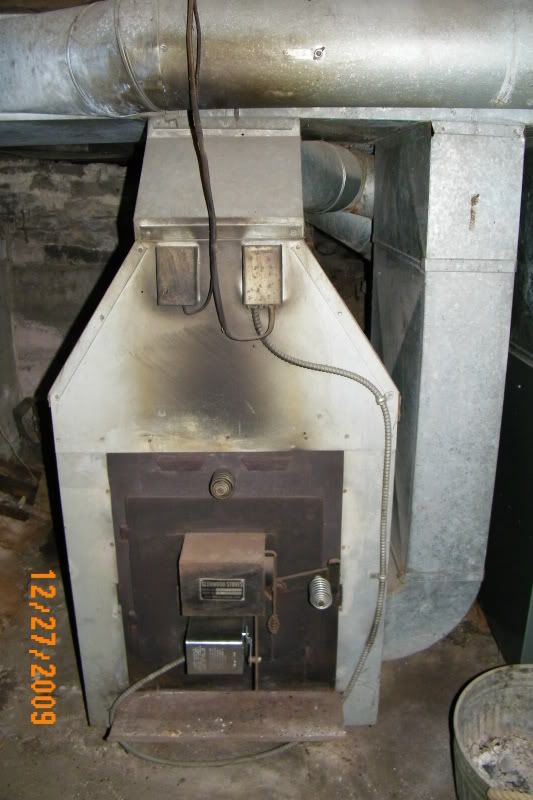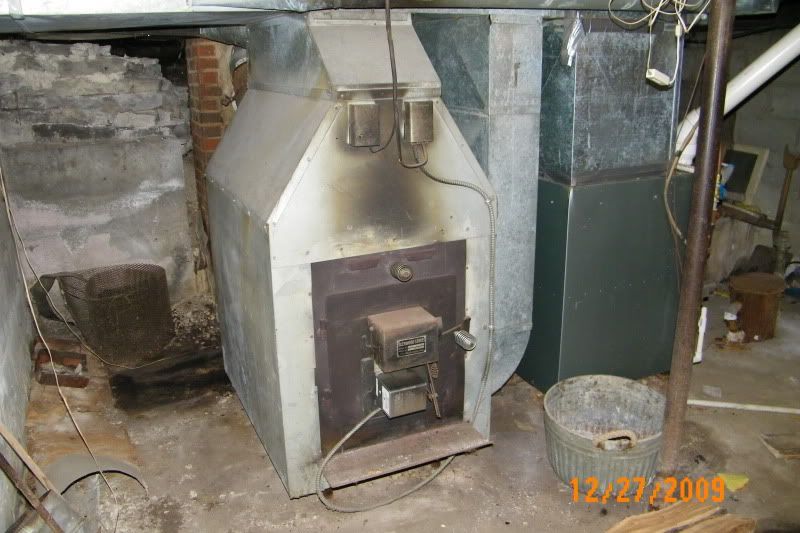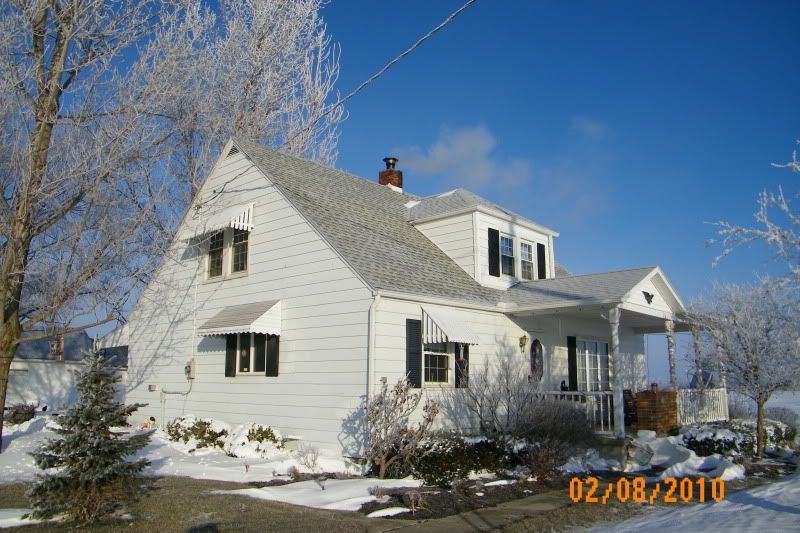buildmyown
ArboristSite Operative
I have a raised ranch roughly 2000sqft. unfinished basement workshop area and oil forced hot air heating system. Right now I have a wood stove in the basement that is an old garrison that needs to be replaced after this year. It is warped and leaking and is passed its prime this stove has heated my house for 30 years relying on convection.
Ive been looking around a little at replacement stoves but also been thinking about an add on furnace. I know very little about these. Right now the stove and furnace are on different ends of the basement. I have 8 inch black pipe that runs up the wall then threw it and into 8 inch tripple wall stainless. For cost reasons what ever replacement I decide on is going to go right where the old stove is.
The main trunk line and cold air return both terminate right neat the exisitng stove. Would it be possable to tie into the duct work at that point and use the existing furnace blower to move the hot air upstairs?
Also with an indoor furnace do they rely on power or in the case of an outage will they still work and radiate heat like a normal stove or would a need a back up generator?
Ive been looking around a little at replacement stoves but also been thinking about an add on furnace. I know very little about these. Right now the stove and furnace are on different ends of the basement. I have 8 inch black pipe that runs up the wall then threw it and into 8 inch tripple wall stainless. For cost reasons what ever replacement I decide on is going to go right where the old stove is.
The main trunk line and cold air return both terminate right neat the exisitng stove. Would it be possable to tie into the duct work at that point and use the existing furnace blower to move the hot air upstairs?
Also with an indoor furnace do they rely on power or in the case of an outage will they still work and radiate heat like a normal stove or would a need a back up generator?





 :hmm3grin2orange:
:hmm3grin2orange: